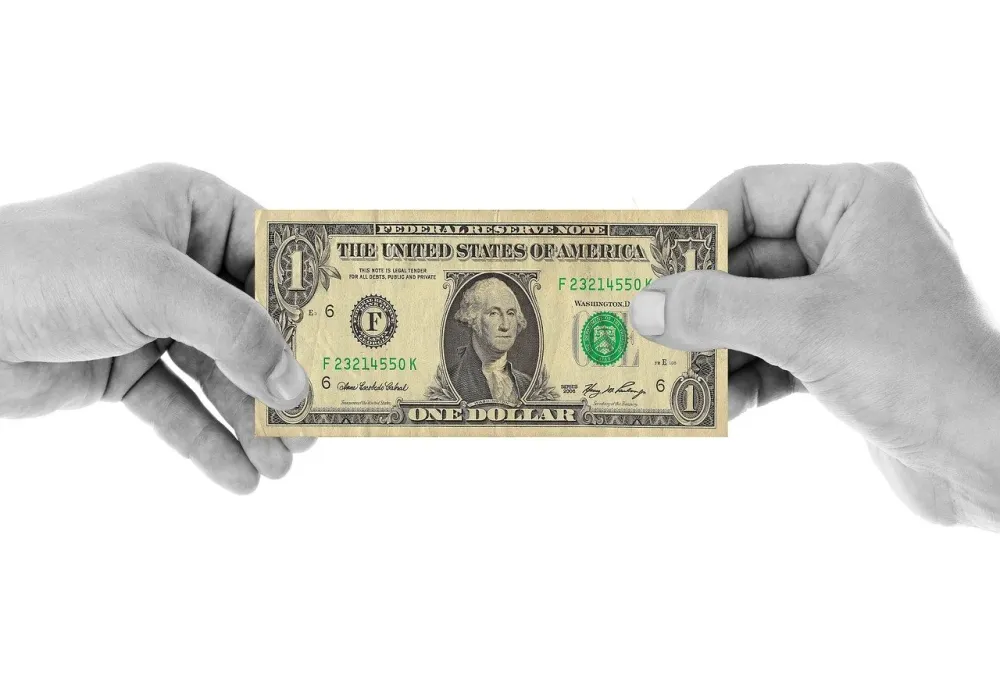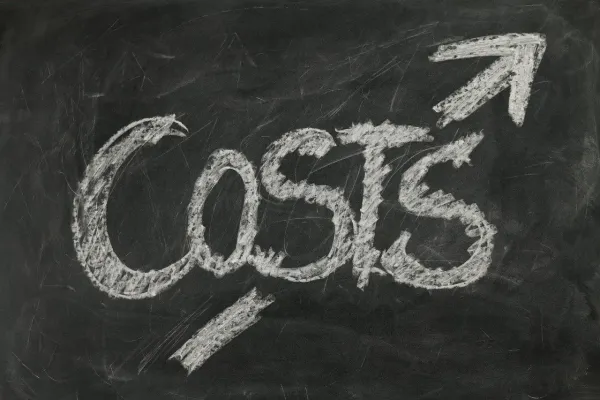
An image showing two hands holding money.
Real Interest Rate Formula
What is the Interest Rate?
The cost of borrowing money, expressed as a percentage of the amount of the loan, is called the interest rate.
In simple words, the amount paid by the borrower to the lender for the use of borrowed money, expressed as a percentage of the principal amount, is called the interest rate. It is the price charged by the lender for sacrificing liquidity.
Type of Interest Rate
There are two main types of interest rates.
- Nominal Interest Rate
- Real Interest Rate
Nominal Interest Rate
Definition
The interest rate measured at the current year prices and which includes inflation, is called the nominal interest rate.
It is the interest rate which banks and financial institutions state, advertise and actually pay. It does not consider the rate of inflation. For example, the interest rate paid by banks on saving accounts is the nominal interest rate.
Real Interest Rate
Definition
The interest rate measured at base year prices and adjusted for inflation is called the real interest rate. Mathematically, it is calculated by subtracting the rate of inflation from the nominal interest rate.
The real interest rate reflects the real return on investment for a lender and the real cost of borrowing for the borrower.
Real Interest Rate Formula

Real Interest Rate = Nominal Interest Rate - Rate of Inflation
The real interest rate formula incorporates the nominal interest rate and the inflation rate. By subtracting the inflation rate from the nominal interest rate, we arrive at the real interest rate. This formula allows us to quantify the true rate of return or cost of borrowing.
Understanding the Real Interest Rate
While the nominal interest rate does not consider the effect of inflation, the real interest rate accounts for the increase or decrease in the cost of borrowing or the return on loans by considering the rate of inflation.
Basic Terms
To understand the concept of the real interest rate, let’s define some basic terms.
Inflation
The increase in the general price level of goods and services in an economy over a period of time is called inflation. It is calculated by using the consumer price index.
Purchasing Power
The number of units of a product which a given amount of money can buy is called its purchasing power. Purchasing power of money or the value of money decreases due to inflation.
Step-by-Step Guide to Calculate the Real Interest Rate
Here is an easy, step-by-step guide to calculating the real interest rate.
1. Determine the nominal interest rate, typically provided by the bank or lender.
2. Obtain the inflation rate, usually available from government statistics.
3. Subtract the inflation rate from the nominal interest rate.
4. The resulting value represents the real interest rate.
Real Interest Rate Calculation Example
Let's consider a situation where Mr. A has deposited $1000 in his savings account at a bank at 9%, nominal rate of interest. The inflation rate is 3%. The calculation of the real interest rate is given below:
Real Interest Rate = Nominal Interest Rate – Inflation Rate = 9% - 3% = 6%
Interpreting the Answer
Mr. A will get $900 (9% of $1000) from the bank by the end of the year. This is the nominal value of the return on savings or deposits. In terms of purchasing power, Mr. A is getting $600 (6% of $1000), and $300 is eroded from the nominal value due to inflation level.
A positive answer of the real interest rate indicates that the purchasing power of an investment or loan has increased, while a negative real interest rate implies a decrease in purchasing power. A real interest rate of zero means that the nominal interest rate and inflation rate are equal.
The Significance of the Real Interest Rate
The real interest rate is an important figure to consider for lenders and borrowers. For lenders, it determines the real return on their lending. For borrowers, it shows the true cost of borrowing loans. By using the real interest rate figure, lenders and borrowers can make better financial decisions about lending and borrowing.
Assessing Investment Opportunities
The real interest rate can help investors and banks assess investment opportunities by considering the actual return on their investments after accounting for inflation. It helps investors and banks consider the real profitability of an investment option.
Assessing Borrowing Options
Borrowers use the real interest rate to assess the real cost of funds and make borrowing decisions accordingly. They can compare the real rate of return of their investments with the real interest rate to make better borrowing decisions. They can also evaluate if a borrowing option is affordable for them in real terms.
Factors Affecting the Real Interest Rate
The two main factors affecting the real interest rate are the changes in the inflation rate and the nominal interest rate.
The Impact of Inflation
The real interest rate is calculated by subtracting the inflation rate from the nominal interest rate. A higher inflation rate means a lower real interest rate, assuming that the nominal interest rate remains constant. It means that the lenders are getting a lower real return on their lending, and the borrowers face a lower real cost of borrowing.
The Effect of the Nominal Interest Rate
The nominal interest rate is determined by the central banks as part of monetary policy. Any change in the nominal interest rate by the central bank will affect the real interest rate.
The Fisher Equation
The Fisher equation gives the relationship between the nominal interest rate and the real interest rate by considering the expected rate of inflation. This equation is given below.

Nominal Interest Rate = Real Interest Rate + Expected Inflation Rate
Some economists argue that the Fisher equation is a better way to find the relationship between the nominal interest rate and the real interest rate.
When we calculate the real interest rate, we consider the current or actual rate of inflation. This approach is suitable for finding the real cost of borrowing under existing loan agreements.
However, when a loan agreement is not yet made, the interest has to be paid in the future. So the present rate of inflation will not be that useful. The Fisher equation relies on the future rate of inflation to determine the interest rate of a loan.
For example, if the real interest rate is 6% and the expected future rate of inflation is 5%, the nominal interest rate will be calculated as follows.
Nominal Interest Rate = Real Interest Rate + Expected Inflation Rate = 6% + 5% = 11%
This will be the contracted rate of interest if a loan agreement is made.
Conclusion
The real interest rate is equal to the nominal interest rate minus the inflation rate. It shows the true cost of borrowing or return on investment. By considering the real interest rate, borrowers and lenders can make better financial decisions. By accounting for changes in purchasing power, the real interest rate provides a more accurate assessment of the economic impact of financial decisions.


